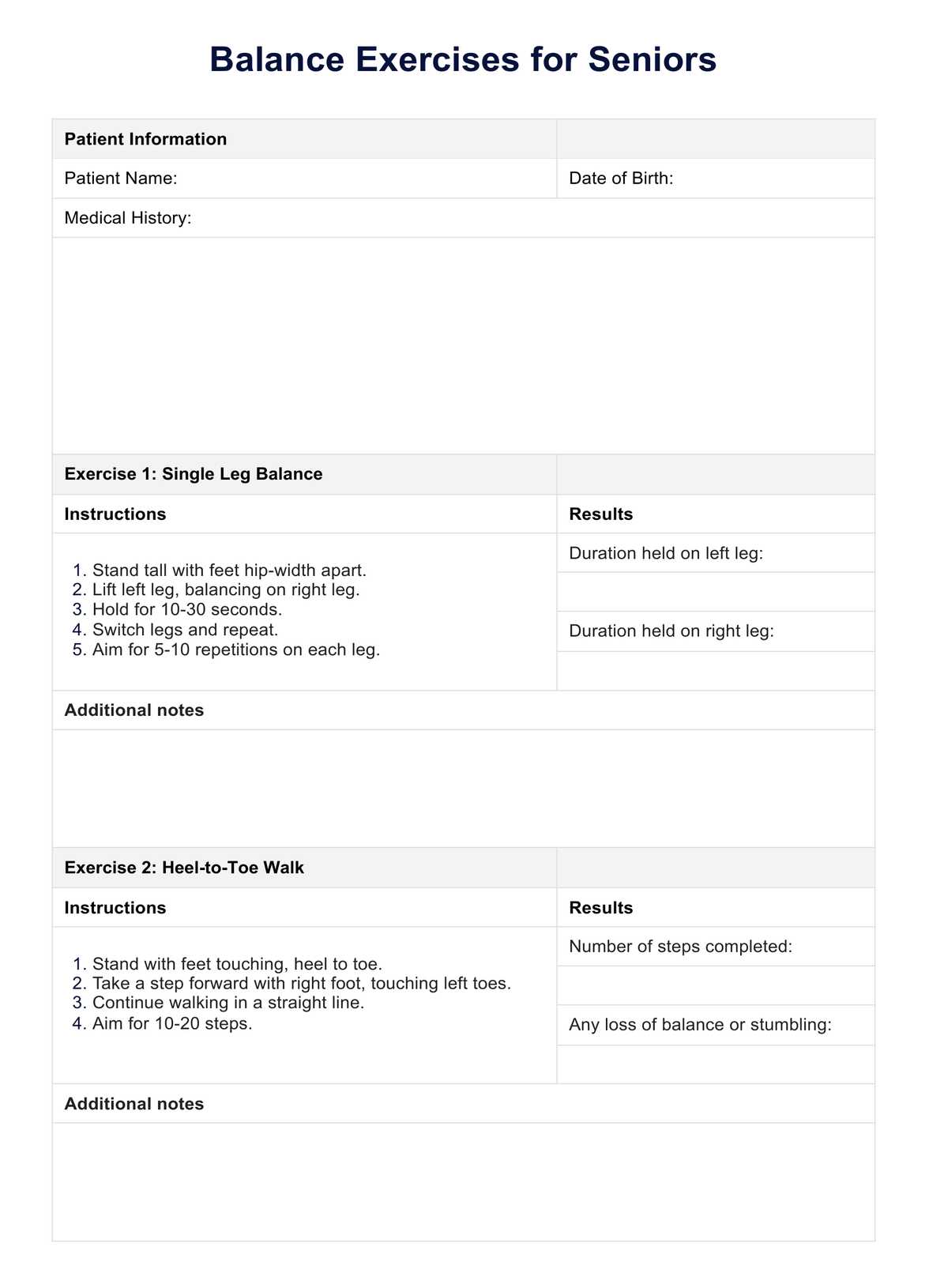The single best balance exercise for seniors is the single leg balance, which helps improve stability and strengthen leg muscles.

Balance Exercises for Seniors
Improve your balance and stability with these effective balance exercises for seniors. Download Carepatron's free PDF with examples and enhance your overall well-being today.
Use Template
Balance Exercises for Seniors Template
Commonly asked questions
Elderly individuals can improve balance by incorporating a variety of exercises such as Tai Chi, yoga, and strength training into their routine.
The best exercise to regain balance depends on individual needs and abilities, but exercises like standing on one foot or heel-to-toe walking can be effective.
EHR and practice management software
Get started for free
*No credit card required
Free
$0/usd
Unlimited clients
Telehealth
1GB of storage
Client portal text
Automated billing and online payments











